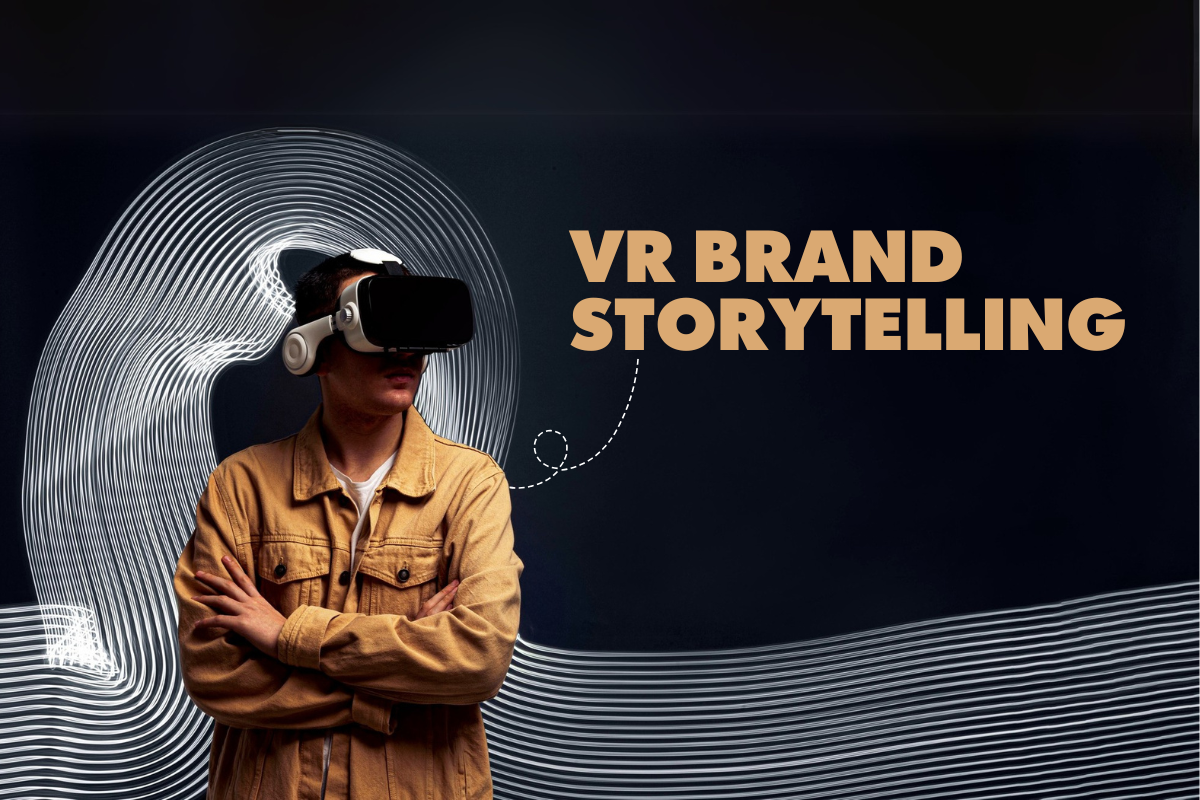The way we tell stories is evolving, and virtual reality (VR) is leading the charge. In an era where consumer attention is fleeting and expectations are high, VR allows brands to go beyond the screen—placing users at the heart of the narrative. It’s no longer just about conveying a message, but about building a world that audiences can step into, explore, and remember.
VR brand storytelling is quickly becoming one of the most effective methods for creating memorable, emotional connections with audiences. This immersive technology doesn’t just show—it lets users experience a brand’s values, vision, and voice in real time. As more businesses seek innovative content formats, VR stands out for its ability to humanize technology, personalize messaging, and generate high-impact engagement.
What Is VR Brand Storytelling?
VR brand storytelling refers to the use of virtual reality to craft branded experiences that allow audiences to interact with and navigate through the content. Instead of watching a video or reading a blog, users wear a headset or use interactive platforms,to enter a virtual environment created by the brand.
This technique merges cinematic storytelling with real-time engagement, giving companies a powerful tool to connect emotionally with consumers. Unlike traditional content formats, VR experiences are remembered more vividly and generate deeper brand loyalty.
Why VR Stands Out in Modern Marketing
Today’s digital audience is increasingly difficult to impress. Generic, passive content often fails to cut through the noise. VR changes that by turning viewers into participants. It taps into the psychology of memory, using 360-degree visuals and spatial audio to create fully immersive environments.
Brands using video production services and interactive formats are already seeing increased engagement metrics. When those services incorporate VR, the results often include:
- Longer session durations
- Increased emotional engagement
- Higher information retention
- Greater social sharing potential
Video production companies and corporate video makers are now offering VR as part of their services to help businesses stay ahead in an experience-first economy.
Key Use Cases for VR in Brand Communication
Product Demonstrations
A VR showroom allows users to interact with a product, explore features, and test scenarios before buying. This has become particularly popular for auto brands, electronics, and real estate companies.
Brand Heritage and Storytelling
Brands with a rich legacy can recreate historical moments or behind-the-scenes processes. This builds trust and transparency.
Retail and Ecommerce
With the rise of ecommerce marketing services, integrating VR into online platforms allows for virtual try-ons, walkthroughs, and personalized shopping experiences.
Event and Experience Marketing
VR extends the reach of physical events, allowing users to attend conferences, concerts, and product launches from anywhere in the world.
Corporate Training and Recruitment
Businesses working with corporate video production companies use VR for onboarding, safety training, and simulating workplace scenarios.
How Video Production Agencies Are Powering the VR Revolution
To bring these ideas to life, brands partner with agencies that specialize in high-end video production and post-production services. These agencies combine storytelling, cinematography, 3D animation, and sound design to create immersive experiences that feel both real and meaningful.
The role of a video production agency is no longer limited to traditional commercials. Today, they build brand ecosystems—offering services like:
- Explainer video production for complex solutions
- Product video maker services with interactive elements
- Corporate video production tailored for AR/VR platforms
- Video editing services that support immersive formats
- Marketing video agency strategies that align VR content with campaign objectives
The increasing demand for creative technology is driving more agencies to invest in motion graphics, real-time rendering, and VR platform integration. It’s not just about visual quality; it’s about narrative flow, user interaction, and behavioral tracking.
The Technical Foundation of a VR Brand Experience
Creating a seamless VR experience involves technical precision. Video editors in Bangalore and other digital hubs use advanced tools like Unity, Unreal Engine, and 360-degree cameras to build interactive environments. Audio design, transition mapping, and scene logic are essential components.
With the help of a video editing agency or corporate video production company in Bangalore, businesses can develop VR campaigns that are lightweight, responsive, and compatible across devices. These companies also manage distribution, helping brands publish VR content across YouTube, apps, and even retail kiosks.
Whether you’re working with a business video maker, a video ad agency, or a YouTube video intro maker, integrating VR elements requires a clear narrative, visual coherence, and platform alignment.
Future Trends in VR Brand Storytelling
Shoppable VR Experiences
Linking ecommerce platforms directly into VR environments will allow users to shop in real time.
AI-Driven Personalization
Machine learning will tailor the VR experience based on user behavior, preferences, and purchase history.
Cross-Platform Integration
VR campaigns will increasingly be part of broader omnichannel marketing strategies, spanning social media, web, and email.
Short-Form VR for Social Media
Platforms like Instagram and YouTube are experimenting with bite-sized, interactive VR snippets that can be embedded in stories and reels.
Data-Driven Insights
Just like with traditional digital campaigns, VR analytics will offer insights into viewer interaction paths, dwell time, and engagement rates.
Challenges to Consider
Despite its potential, VR brand storytelling requires careful planning. High production costs, device limitations, and longer development cycles can be barriers. However, partnering with a well-equipped video production company in India or a seasoned video editing studio can offset many of these challenges.
By using scalable tools, modular scripts, and collaborative workflows, agencies help brands maximize the ROI of VR without compromising on creativity or impact.
Conclusion
In today’s hyper-connected world, attention is a currency. Brands that offer not just content, but experiences, are the ones that stand out. VR brand storytelling is more than a futuristic add-on—it’s a game-changing strategy that empowers businesses to make lasting impressions.
As consumers demand more personalization, more immersion, and more interaction, VR offers the perfect blend of all three. It’s time for brands to stop talking at audiences—and start creating with them.
Ready to build immersive brand experiences that captivate and convert? Reach out to our team today—we’ll help you shape the future of storytelling.


